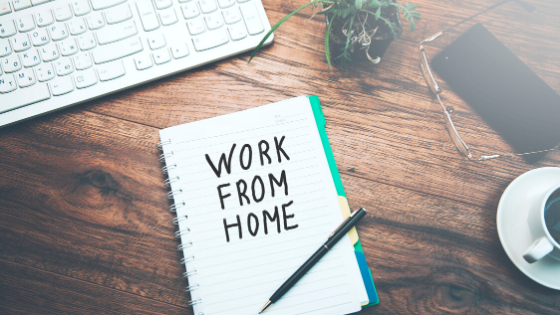The sudden change from working in an office to working from home, along with all the uncertainty surrounding the dreaded C-word, has increased our anxieties and our collective stress levels. It’s no secret that stress is starting to take its toll, feeding a perpetuating cycle that can lead to burnout. But, we’re not powerless in fighting it off and employing the following steps can help you break that cycle.
1. Keep To a Schedule or Routine
It has been hard to keep a routine, especially when our commute times are only as long as it takes to roll out of bed and zombie-walk to our computers. (With a detour to the coffee pot)
Setting a schedule and retaining some semblance of a routine is an absolute necessity for our brains and our bodies. Humans are creatures of habit and without the regularity of getting out of bed, getting showered and dressed, making a cup of coffee, going for a run or however you like to manage your day, your brain will find it harder to move from home mode and into work mode.
“Zoom burnout is a real thing. Manage your calendar, and let your calendar guide your sanity. Schedule a walk, change a Zoom to a traditional call, build in sanity breaks,” Ira M. Gostin, MBA, APR, Strategist
“Get outside! It is amazing what it can do for your productivity and creativity. It can be easy to stay inside especially working from home, there is no excuse to exit your house since you no longer leave for work. Make the time. Take a walk. Go for a hike. Create the space. You will be amazed at the benefits.” Kristen Furleigh, MBA, Account Manager
2. Set Boundaries
For some reason, we trick ourselves into feeling like we have to work longer days or always be online to make up for a perceived drop in productivity. This need to prove ourselves is stressing us out and we don’t have the physical change in locations that tells us to quit working.
So, we need to change that ourselves and stick to our usual work schedules, make time for family and relaxation. The time in between workdays provides us with a much-needed mental-shift and is vital to limiting stress.
Remember, our employers are still expecting the same level of productivity as we were working before this all started.
“You will never be prepared for something like this until it has already happened.” Even Muth, Public Relations Specialist
3. Get Up and Move
Remember the time when you would finish a particularly long task, stand up, stretch and walk to the water cooler or coffee pot? Yeah, me too. Now we have to force those breaks in between work.
Try a walk around your neighborhood during your lunch, stretch in between meetings or just go outside with the dog when he needs it. Your heart will thank you, the blood pumping to your brain will help you focus and the endorphins will likely reduce your stress.
Working from home is no easier than working at the office, as our professional and personal lives have blended together, creating a nearly imperceptible difference in our minds. If we have any hope of getting back to normal, we’ve got to take a step back and draw those lines ourselves.
“Make sure to take breaks, stand up, walk around, and take a few deep breaths to reset your mind and body. Protect your home space versus your work space so you are not tempted to keep working on your “off” time and to help you focus better during work time.” Amanda Long, Digital Engagement Manager
By the IPSM Staff.

